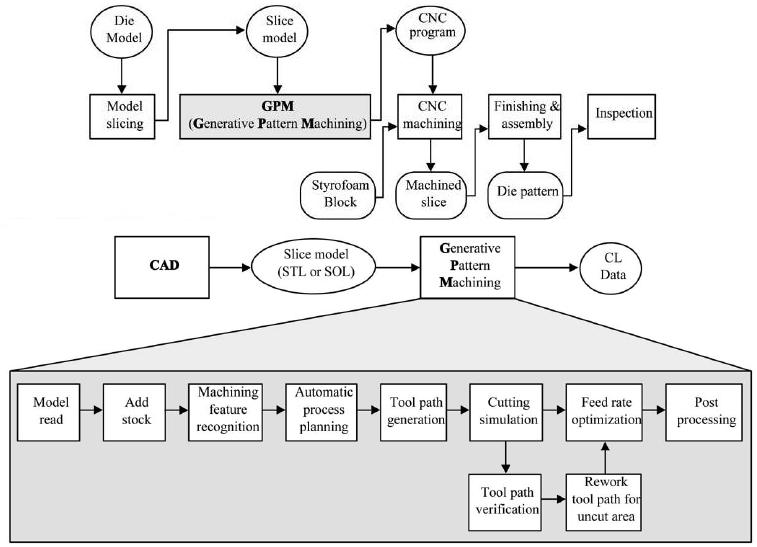Computer-aided process planning
Process planning is regarded with determining the sequence of individual manufacturing operations required to generate a specified part or product. The resultant operation sequence is documented on a form generally considered to like a route sheet consisting of a listing of the production operations and associated machine tools for a work part / assembly. Process planning in manufacturing as well refers to the planning of use of blanks, packaging material, spare parts, user instructions (manuals) etc.
The word "Computer-Aided Production Planning" is employed in dissimilar context on dissimilar parts of the production process; to some extent CAPP overlaps with the word "PIC" (Production and Inventory Control).

Process planning that translates design information into the process steps and instructions to professionally and efficiently manufacture products. Since the design process is supported via many computer-aided tools, computer-aided process planning (CAPP) has developed to simplify and improve process planning and achieve more effective make use of manufacturing resources.
Process planning includes the activities and functions to get ready a detailed set of plans and instructions to produce a part. The planning starts with engineering specifications, parts, drawings, or material lists and a forecast of demand. The outcomes of the planning are:
- Routings that identify operations, operation sequences, work centers, tooling and fixtures. This routing becomes a main input to the manufacturing resource planning system to describe operations for production activity control purposes and define needed resources for capacity requirements planning purposes.
- Process plans that typically provide more detailed, step-by-step work instructions involving dimensions related to individual operations, set-up instructions, machining parameters, and quality assurance checkpoints.
- Assembly and Fabrication drawings to support manufacture (as opposed to engineering drawings to describe the part).
Keneth Crow said that "Manual process planning is based upon a manufacturing engineer's experience and knowledge of production facilities, their capabilities, equipment, processes, and tooling. Process planning is extremely time-consuming and the results differ based on the person doing the planning".